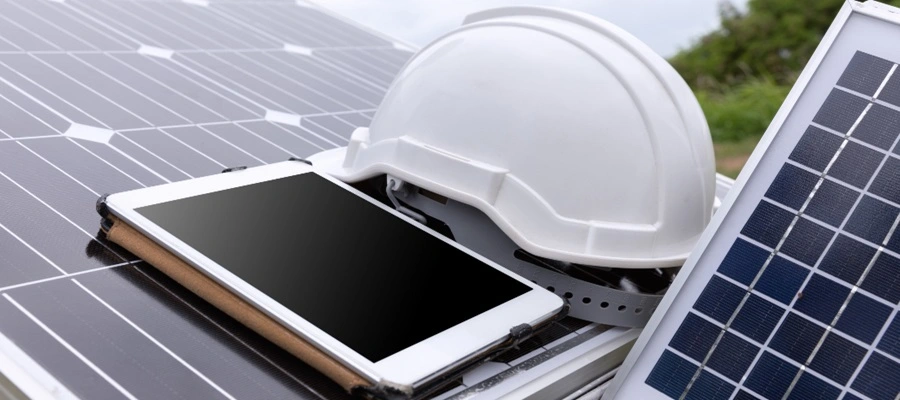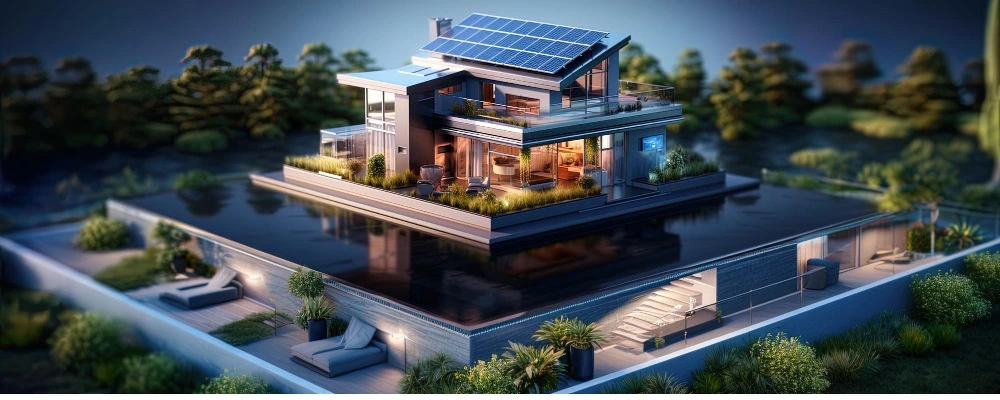As concerns about climate change grow, sustainable building practices become more important. Hence, many building companies and homeowners understand the benefits of solar photovoltaic systems in construction. By using free, renewable solar energy, builders can lower utility costs, improve branding, receive incentives, and have an environmental impact.
Over the past ten years, solar technology has grown incredibly efficient and affordable. Using the sun’s abundant energy yields benefits even after installation because solar infrastructure is designed to survive for decades with no upkeep. So, Brick & Bolt brings a detailed guide on solar photovoltaic systems in construction. It will help you to understand how solar energy can be used during construction and the benefits of solar photovoltaic systems in construction.
How to Integrate Solar Panels into Construction Projects
Every construction project manager interested in solar should consult with experienced solar consultants during the design process. Based on the building blueprints and intended use, they can recommend the best solar photovoltaic system alternatives for their needs. In addition to panel tilt angles and type of technology, solar array location for best sun exposure is an important design element which you have to consider when you planning to incorporate solar photovoltaic systems in construction.
By combining and matching technologies and locations, solar design specialists may frequently assist in creating a unique solar system installation plan appropriate for building budgets. Programs for state or federal incentives might further reduce the cost of purchases.
Types of Solar Panels for Building Projects
These days, two main types of solar panels are typically available for building projects: Monocrystalline and Polycrystalline solar panels. They are the most effective solar photovoltaic systems for converting sunlight into electricity. They can be erected as freestanding structures in the ground or mounted on rooftops. Solar cells embedded in roof tiles or shingles,
Benefits of Solar Photovoltaic Systems in Construction

Homeowners or property owners can reap significant advantages after a PV system is established and linked to the electrical grid. Solar panels require a considerable investment, even if their initial cost significantly decreases with government incentives. The good news is that reduced utility bills can yield substantial returns to building owners over the years. For at least 25 to 30 years, well-maintained solar energy systems may produce a plentiful supply of clean power.
Let’s Look at Some of the main benefits of solar photovoltaic systems in construction:
Diminish the Effect on the Environment
Integration of solar photovoltaic systems in construction is the best way to create green buildings. Solar electricity is produced without emitting greenhouse gasses that warm the planet or cause air or noise pollution. This allows homeowners and builders to stop funding fossil fuel power plants. Using solar electricity to build net-zero buildings is the ultimate sustainable goal.
Reduce Electricity Utility Expenses with PV System
With solar panels, you may be independent of your electricity generation and stop worrying about rising electricity costs. Solar arrays can supply 60–80% of a building’s yearly energy needs. Owners receive extra energy credits to feed surplus electricity into the electrical system.
Enhanced Branding and Competitive Appeal
Incorporating visibly high-performance PV systems into new construction enhances environmental credibility. This attracts conscientious home buyers and commercial tenants while showcasing the builders’ sustainable efforts. Features like solar roof shingles also boost aesthetic curb appeal.
A Successful Investment Throughout Decades
Because of the years of utility savings, most solar systems pay for themselves in 4-6 years. By producing free renewable energy, they provide value for more than 20 years after that. Because of this, solar is a wise and lucrative green investment.
Conclusion
When you switch to solar power, you invest in a bright, sustainable future. As the climate issue has reached a critical turning point, building methods must become more environmentally conscious. Utilising solar photovoltaic systems to capture the sun’s abundant and renewable energy is a critical objective for energy independence and sustainable building practices. Additionally, efficiency has increased over the last ten years, and solar technology costs have fallen. These days, most residential and commercial buildings’ hot water and electricity needs are satisfied by solar-powered systems.
With the development of affordable battery and power control technology, it is now feasible to construct net-zero energy buildings disconnected from the traditional power grid. The best chance for builders and homeowners is to engage with solar professionals in the planning and structural design stages. This ensures that property owners can fully use photovoltaic’s financial and sustainability benefits for many years.

